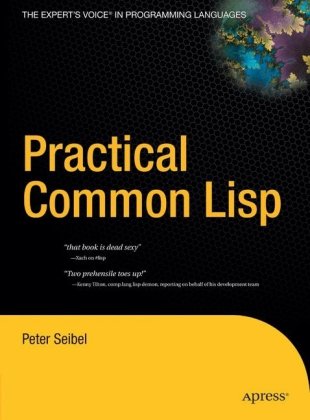Practical Common Lisp by Peter Seibel

Practical Common Lisp has turned into the de facto standard for beginners who want to learn Common Lisp, and deservingly so. The opening chapters delve right into the development style of Common Lisp and show how it differs from more mainstream languages. It covers all the basics and more, eventually leading into chapters explaining how to parse MP3 files and create and create an MP3 Shoutcast server from scratch.
Common Lisp is my favorite language to develop in, but most people I talk to dismiss it as being too old and irrelevant for today’s computer applications. I highly disagree. The fact that the language is old is actually one of it’s strengths: every design decision seems so well thought out. I’ve had numerous moments where I commented to myself “you know, it would be nice if this function could do this,” and then discovered that it could after reading the documentation. And the development environment is the best out there. The Slime/Emacs/Lisp combination is way ahead of Visual Studio in terms of interactivity, customization, jumping through source files and debugging.
I recommend this book to all developers out there, as learning Common Lisp helped me in my day job as well. At least read through the chapter on creating a unit test framework to get a feel of what software development should be like.